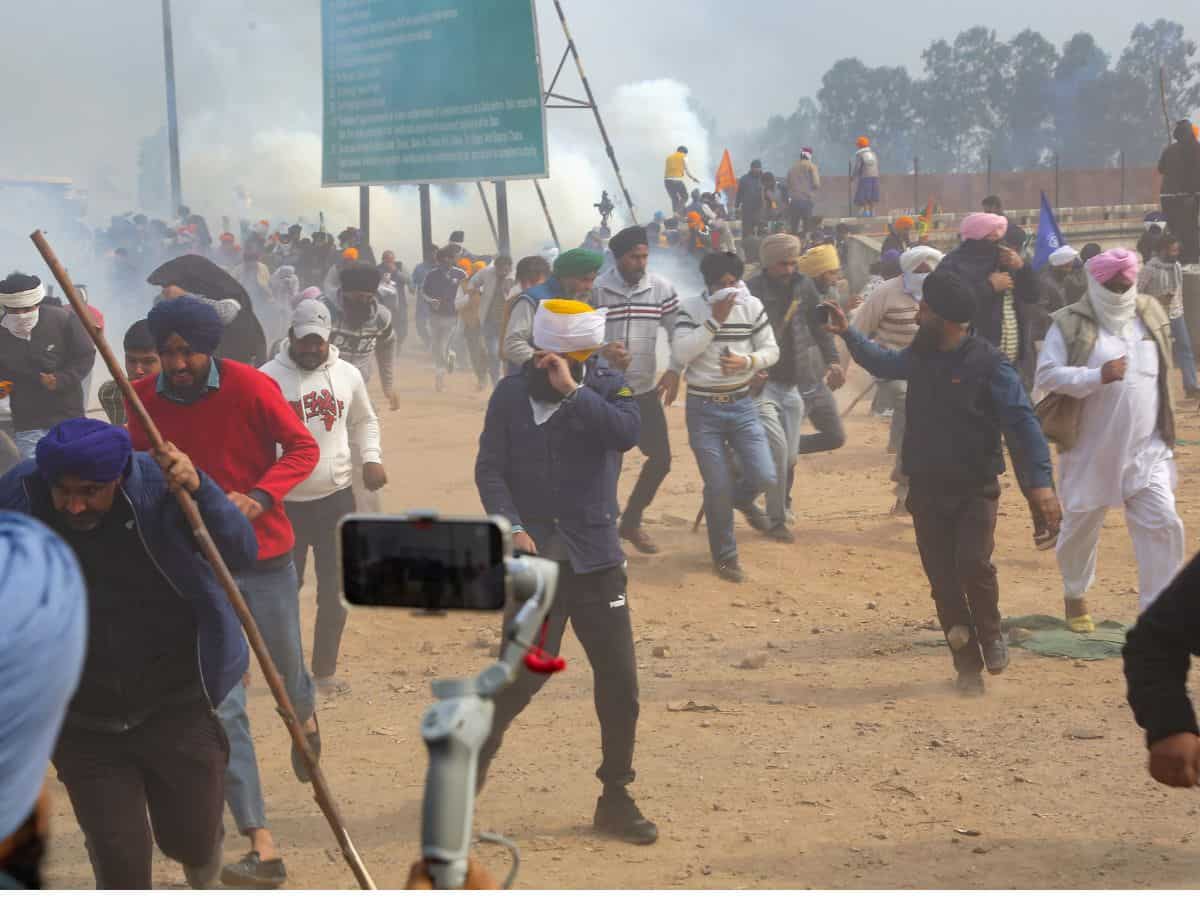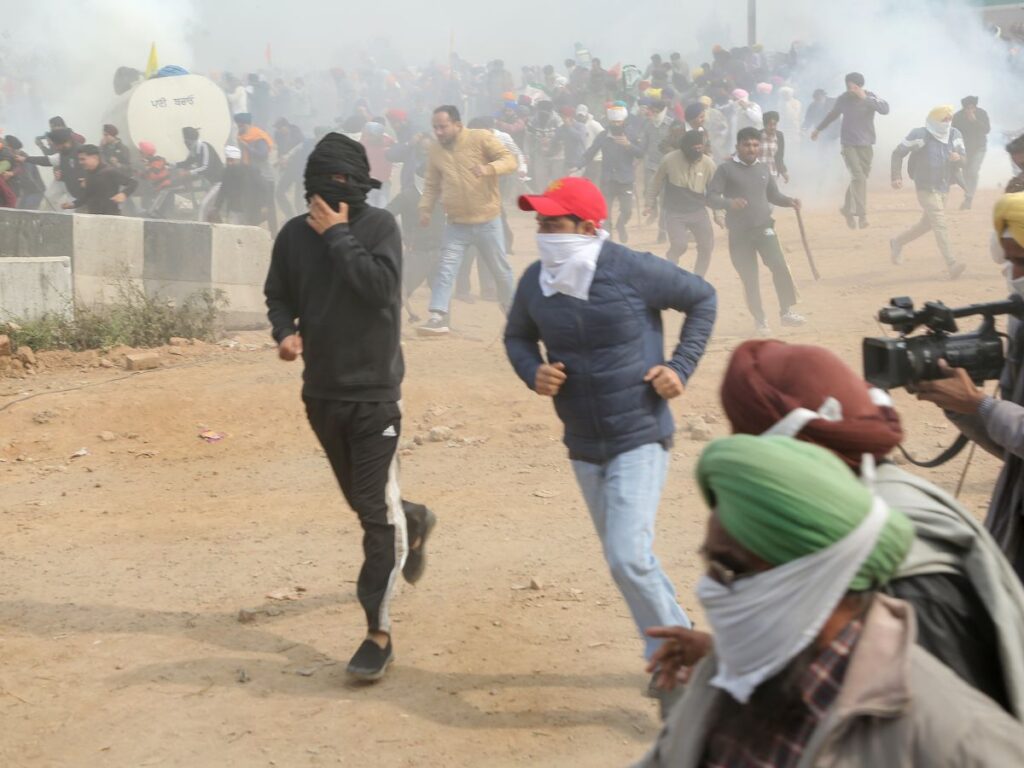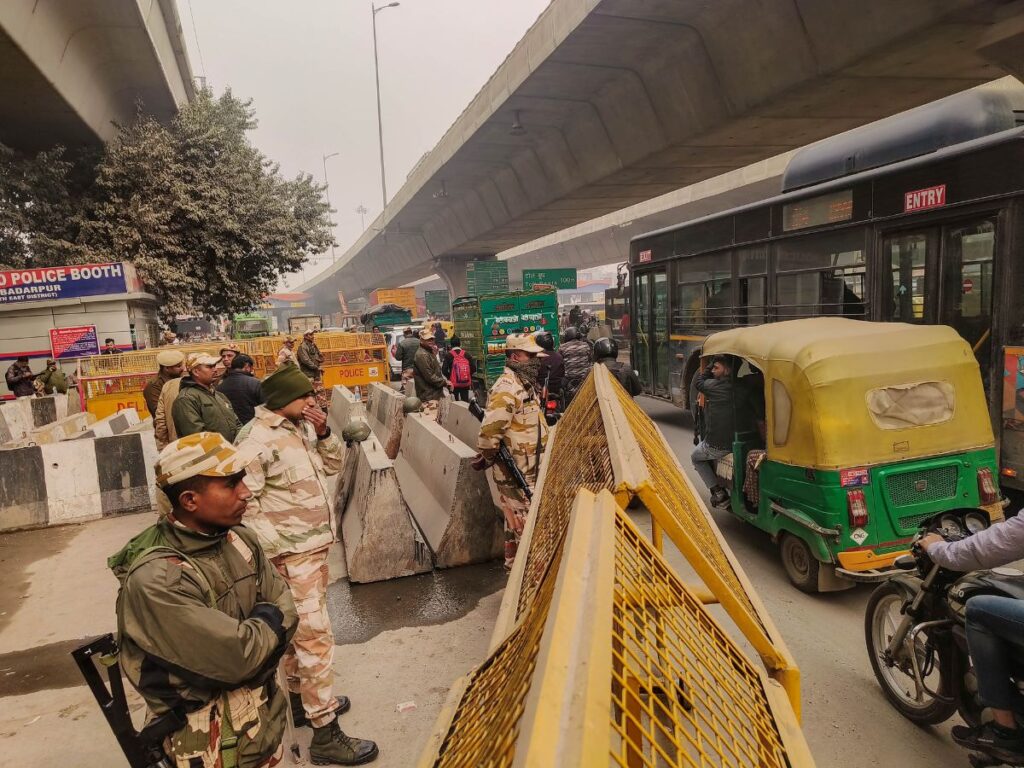
Chandigarh: As hundreds of protesting farmers, mainly from Punjab, were stopped on Tuesday, February 13, at the Punjab-Haryana Shambhu border to prevent them from reaching Delhi, Haryana Police fired tear gas to disperse them.
The farmers have been seeking a law on minimum support price (MSP) as one of their key demands.
Heavy security has been deployed and blockades erected at all borders in Haryana to prevent the marching protesters from moving ahead.
Even a drone has been deployed to drop tear gas shells on the protesters. Some of the empty shells, collected by protesters and shown to the media on the spot, expired in 2022.
Earlier in the day, thousands of farmers, led by over 200 unions under the banner of Samyukta Kisan Morcha (non-political) and the Kisan Mazdoor Morcha, embarked on the ‘Delhi Chalo’ protest march towards the national capital after several hours of a high-level meeting with farmer leaders and two Union ministers — Agriculture Minister Arjun Munda and Food and Consumer Affairs Minister Piyush Goyal, in Chandigarh remained inconclusive.
At the meeting, the Union ministers were favouring a committee on the issue of the MSP but the farmer leaders turned that down.
The Centre also agreed to withdraw the cases against the farmers registered during the 2020-21 agitation. Also, the Centre did not make any commitment on a loan waiver.

Samyukta Kisan Morcha (Non-Political) leader Jagjit Singh Dallewal, who participated in the meeting, told the media that several committees on the issue had already advocated the need to legalise the MSP. “So another committee would have served no purpose,” he said, adding “The government was also not serious on a loan waiver, though it waived off lakhs of crores of bad debt for big a corporate”.
They accused the government of adopting a stubborn attitude. Sensing that the government did not agree on the MSP demand, they gave the go-ahead to the march to Delhi on Tuesday, sources said.
Security beefed up
A spokesperson for the Haryana Police said they have made elaborate arrangements to maintain law and order in the state.
“A total of 114 companies have been deployed in various districts of the state, out of which 64 companies are from paramilitary forces and 50 companies are from Haryana Police,” spokesperson and Assistant Inspector General Manisha Chaudhary said.
Farmers have planned to enter Haryana from Shambhu border in Patiala, Moonak in Sangrur, Dabwali in Muktsar and Ratia in Mansa. The Haryana Police have sealed all four entry points by putting up barricades, boulders, tippers filled with sand barbed wires and iron spikes, impacting the movement of vehicular traffic with huge traffic snarls.
Security has also been beefed up along the Singhu, Ghazipur and Tikri borders to stop protests in Delhi.
Traffic jam in Noida amid security checks at Delhi borders
Security was beefed up at Noida’s borders with Delhi and checking of vehicles increased on Tuesday in view of a farmers’ protest march to the national capital, impacting the traffic movement in the region.

In Uttar Pradesh, Delhi shares its borders with Noida and Ghaziabad, which have often been the centres of sit-ins by protestors from the state who are not allowed entry into the capital.
DCP (traffic) Anil Kumar Yadav said checking of vehicles is underway at the Noida-Delhi border by police from both sides. “This has led to slight pressure on traffic movement. The traffic inside the city is moving at a normal pace. There is no (traffic-related) problem anywhere in the district,” he said.
“Proper arrangements for traffic have been made. QRT (quick response teams), and marshals have also been deployed. The vehicular movement is being constantly monitored through the Integrated Safety and Traffic Management System (ISTMS). In addition to all this, we are also using drones to keep a watch on traffic movement,” Yadav added.
(With inputs from agencies)



